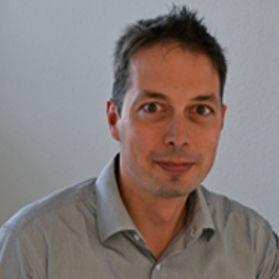


Research Interest
The interplay between electromagnetic waves and the polar structure of ferroelectrics has been a continuous theme in the work of Torsten Granzow since the time of his PhD thesis. The main aspects are the electrooptic modulation of the refractive index, and light-induced charge transport processes. Most recently, he investigated the ‘anomalous’ or ‘bulk’ photovoltaic effect, which arises from the non-centrosymmetric structure of a ferroelectrics and does not depend on any interface such as a p-n-junction. This mechanism is inherently different from that in typical semiconductors and is inherently not bound by the Shockley-Queisser limit. It is directly connected to ferroelectric domain structures and shows particular dependence on the presence of ferroelectric domain walls. Most recently, his team discovered the ‘piezo-photovoltaic effect’, by which a mechanical stress can drastically increase the bulk photocurrent in a ferroelectric.
Biography
Torsten Granzow is a Lead R&T Associate in the group on Ferroic Materials for Transducers, Nanomaterials & Nanotechnology Unit, Materials Research and Technology Department of the Luxembourg Institute of Science and Technology (LIST). He received his PhD from the University of Cologne in 2003 in the field of crystallography. From 2004 to 2012, he worked at the Technische Universität Darmstadt as a post-doctoral researcher in the Nonmetallic-Inorganic Materials Research Group of the Department of Materials Science, where he obtained his habilitation in 2008. In this position, he coordinated the work on ferroelectric materials, with an emphasis on piezoelectric applications, before joining LIST in 2012.
His expertise lies in the electrical and optical characterization of functional polar oxides. This includes the properties of ferroelectric domains as well as relaxor systems, with a special emphasis on novel lead-free ferroelectrics and relaxors. In particular, his work contributed to the understanding of the performance of piezoelectrics based on solid solutions of bismuth sodium titanate. He has published 96 research papers and has 1 patent.
For more information on his group’s research
